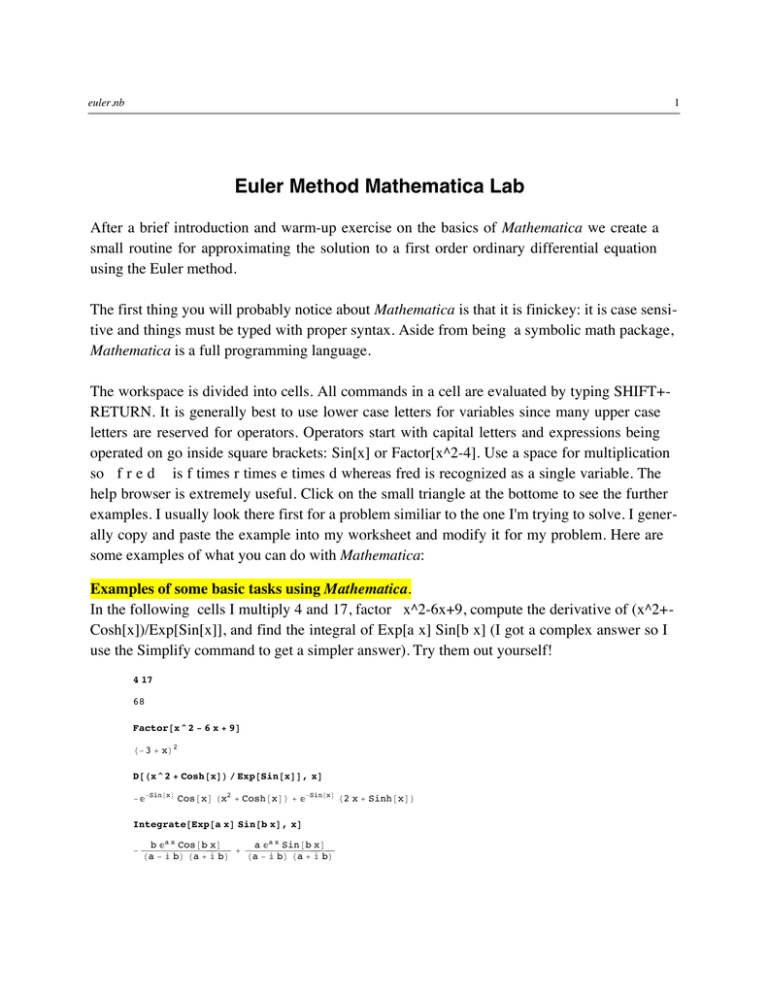

When, the value of in millions is given by: The Euler method provides a numerical solution as follows.

If the birth rate is 6%, then and the exact solution of the population follows the following equation: With the initial condition of, the exact solution to this differential equation is: If represents the population in millions and represents the time in years, then the IVP is given by: The rate of growth is directly proportional to the current population with the constant of proportionality. If 2.5% of the population have a child in a given year, while the death rate is 1% of the population, what will the population be in 50 years? What if 6% of the population have a child in a given year and the death rate is kept constant at 1%, what will the population be in 50 years? Solution The Canadian population at (current year) is 35 million. The procedure then carries on the Euler method and outputs the required data vector.

The following Mathematica code provides a procedure whose inputs are There are many examples in engineering and biology in which such IVPs appear. If the errors from each interval are added together, with being the number of intervals and the total length, then, the total error is: Using this estimate, the local truncation error is thus proportional to the square of the step size with the constant of proportionality related to the second derivative of, which is the first derivative of the given IVP: Therefore, as an approximation, an estimate for can be taken as as follows: Substituting the differential equation into the above equation yields: Consider the following IVP:Īssuming that the value of the dependent variable (say ) is known at an initial value, then, we can use a Taylor approximation to estimate the value of at, namely with :

The Euler method is one of the simplest methods for solving first-order IVPs. Open Educational Resources Solution Methods for IVPs:


 0 kommentar(er)
0 kommentar(er)
